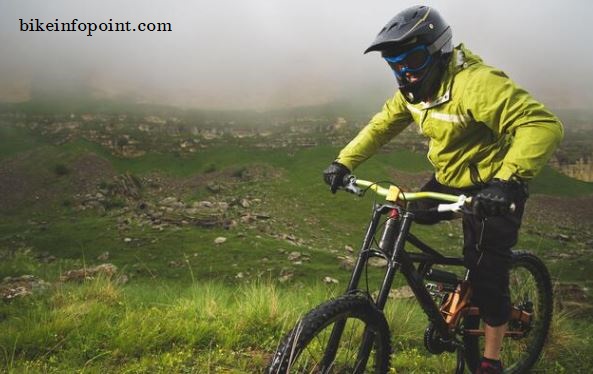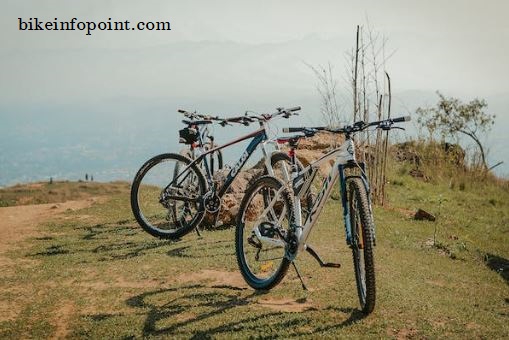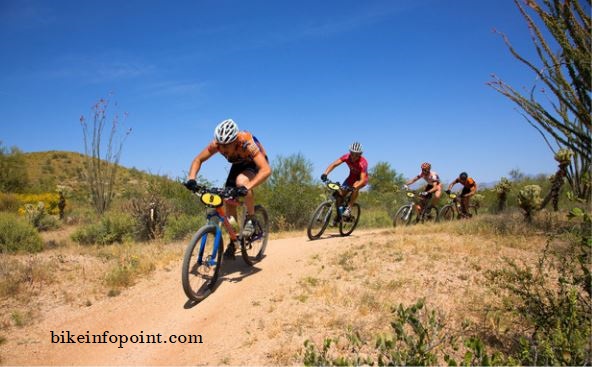
What is a Mountain Bike
A mountain bike is a type of bicycle designed for off road use, typically on rough terrains such as dirt trails, gravel paths, and rocky terrain. It is characterized by its sturdy frame, wide tires with knobby treads, and suspension system that helps absorb the impact of rough terrain. The handlebars are typically wider than those of a road bike, and the rider sits in a more upright position to increase visibility and control.
Mountain biking has its roots in the 1970s, when a group of cyclists in Marin County, California, began riding on the rugged Mount Tamalpais trails. They modified their road bikes to handle the rough terrain, and thus, the first mountain bikes were born. The sport of mountain biking quickly gained popularity and has evolved over the years with advancements in technology and design. Today, mountain biking is enjoyed by people of all ages and skill levels, from casual riders to professional athletes.
Mountain biking can be a fun and challenging way to explore the outdoors, get exercise, and experience the thrill of riding on rugged terrain. Whether you’re looking to ride on a local trail, compete in a race, or go on a backcountry adventure, a mountain bike is the perfect tool for the job.
Table of Contents
ToggleKey Features of a Mountain Bike

A. Suspension: One of the most important features of a mountain bike is its suspension system, which helps absorb the impact of rough terrain and provides the rider with greater control and stability. There are two main types of suspension systems: hardtail and full suspension.
A hardtail bike has a suspension fork at the front of the bike, which helps absorb impact from bumps and obstacles on the trail. This type of suspension is typically simpler and lighter than a full suspension. It makes a good choice for cross country riding and racing.
A full suspension bike has a suspension fork at the front and a rear shock absorber, which helps absorb impact from bumps and obstacles on the trail. This type of suspension provides the rider with more control and comfort. It makes a good choice for more technical terrain and downhill riding.
B. Tires: Mountain bike tires are wider and have more aggressive treads than road bike tires, which allows them to provide better traction and stability on rough terrain. The width of the tire will depend on the type of riding you plan to do. A wider tire will offer more stability and traction, but it will also be heavier.
The tread pattern of the tire will also depend on the type of riding you plan to do. Tires with a more aggressive tread pattern will provide better traction on loose terrain. While tires with a less aggressive tread pattern will provide better traction on harder terrain. It’s important to choose the right tires for the type of riding you will be doing.
The tires also come in different tire pressure, that can change the way the bike handles and feel on the trail, the lower the pressure the more grip. But the slower the bike will roll.
C. Gears: Another important feature of a mountain bike is its gears. A mountain bike typically has multiple gears, which allow the rider to easily switch between different speeds and levels of resistance on the trail.
The most common type of gear system on a mountain bike is a derailleur system, which consists of a derailleur, shifters and a cassette. The derailleur is a mechanical device that moves the chain between the gears on the cassette. The shifters are located on the handlebars, and allow the rider to easily change gears.
The number of gears on a mountain bike will depend on the type of riding you plan to do. A bike with more gears will provide more options for different types of terrain. But it will also be heavier. A bike with fewer gears will be lighter. But it may not be able to handle as much resistance.
Another type of gear system is the internal gear hubs, which are sealed units that are protected from the elements, and typically last longer than the derailleur system. The internal gear hubs are also more maintenance free. Gears are an important feature of a mountain bike.
D. Frame: The frame is the backbone of a mountain bike, and it plays a crucial role in the bike’s performance and durability. The material of the frame will also affect the weight, stiffness, and ride quality of the bike.
The most common materials used for mountain bike frames are aluminum, carbon fiber, and steel. Aluminum frames are lightweight, stiff and affordable. They offer a good balance of strength and weight and are commonly used in cross-country and trail bikes. Carbon fiber frames are very light, stiff and provide a great deal of power transfer. They are more expensive than aluminum frames but are used in high-performance bikes. Steel frames are strong, durable and provide a smooth ride. They are also heavy and not as common in mountain biking.
The geometry of the frame is also an important aspect of a mountain bike’s design. It refers to the angles and measurements of the different parts of the frame and how they relate to each other. Different frame geometries will provide different riding experiences. A bike with a slacker head angle, a longer top tube and a shorter stem will generally provide more stability at high speeds and on technical terrain. while a bike with a steeper head angle, a shorter top tube, and a longer stem will generally provide more agility and responsiveness.
Types of Mountain Bikes

A. Cross-Country: Cross country bikes are designed for long distance riding on a variety of terrain. It typically features lightweight frames and a higher number of gears, making it efficient for climbing and covering long distances. It has less suspension travel, usually around 100mm, which makes it more efficient to pedal but less capable on more technical terrain. XC bikes are good for riders who are looking to cover a lot of distance and want a bike that is efficient and easy to handle.
B. Trail: Trail bikes are a versatile option that can handle a wide variety of terrain. It has more suspension travel, usually around 120-140mm than XC bikes, which makes them more capable on technical terrain. It is also more stable and comfortable to ride, with a more relaxed geometry and a shorter stem. Trail bikes are good for riders who are looking for a balance of efficiency and capability, and want a bike that can handle a variety of terrain.
C. Enduro: Enduro bikes are designed for the most technical and challenging terrain. They have the most suspension travel, usually around 150-170mm and are designed for descending. It is also built to be more durable and can handle more aggressive riding. It have slack geometry, which provides more stability at high speeds and on technical terrain. Enduro bikes are good for riders who are looking for a bike that can handle the most demanding trails and want a bike that is built for descending.
D. Downhill: Downhill bikes are specifically designed for riding on steep and technical terrain, such as at bike parks and downhill trails. It has the most suspension travel, usually around 200mm. Which allows them to handle big drops, jumps and rough terrain. It is built to be durable and handle high speeds and aggressive riding. They have the slackest geometry, which provides the most stability at high speeds and on technical terrain.
Downhill bikes are also designed with a chain guide. Which helps to keep the chain in place and prevent it from falling off the chainring. This is important for downhill riding. Because it can be dangerous to have a chain fall off in the middle of a descent.
Mountain Biking Techniques
Climbing: Climbing is an important technique in mountain biking. Because it allows the rider to ascend steep and challenging terrain. There are several key elements to climbing technique, including body position, gear selection, and proper use of the brakes.
Body position is crucial when climbing, as it allows the rider to maintain control and balance while also conserving energy. The rider should keep their body weight over the rear wheel and keep their elbows and knees slightly bent to absorb shocks and maintain traction.
Gear selection is also important when climbing. The rider should choose a gear that is easy to pedal but will not spin out. A lower gear will provide more torque and make it easier to climb steep inclines. But it will also be harder to maintain speed.
Proper use of the brakes is also important when climbing. The rider should use their rear brake to maintain control and balance and their front brake to slow down. It’s important to use the brakes in a controlled manner, so as not to skid or lose control of the bike.

Descending: Descending is another important technique in mountain biking. Because it allows the rider to safely navigate steep and technical terrain. There are several key elements to descending technique, including body position, gear selection, and proper use of the brakes.
Body position is crucial when descending, as it allows the rider to maintain control and balance while also conserving energy. Rider should keep their body weight over the rear wheel and keep their elbows and knees slightly bent to absorb shocks and maintain traction.
Gear selection is also important when descending. Rider should choose a gear that will allow them to maintain control and stability while also maximizing their speed. A higher gear will provide more speed, but it will also be harder to maintain control.
Proper use of the brakes is also important when descending. Rider should use both brakes to slow down. But they should also be aware of the terrain and adjust their braking accordingly. It’s important to use the brakes in a controlled manner, so as not to skid or lose control of the bike.
Cornering: Cornering is an important technique in mountain biking, as it allows the rider to navigate tight turns and switchbacks. There are several key elements to cornering technique, including body position, gear selection, and proper use of the brakes.
Body position is crucial when cornering, as it allows the rider to maintain control and balance while also conserving energy. Rider should keep their body weight over the rear wheel and keep their elbows and knees slightly bent to absorb shocks and maintain traction. They should also look where they want to go and not at the obstacle they want to avoid.

Jumping: Jumping is an advanced technique in mountain biking that allows the rider to clear obstacles and perform tricks. There are several key elements to jumping technique, including body position, gear selection, and proper use of the bike’s suspension.
Body position is crucial when jumping. Because it allows the rider to maintain control and balance while also conserving energy.
Safety Considerations
Helmets: Wearing a helmet is one of the most important safety considerations when mountain biking. Helmets are designed to protect the head and brain from injury in the event of a fall or collision.
Protective gear: In addition to a helmet there are other types of protective gear that can be worn while mountain biking. This can include gloves, eyewear, pads for the knees, elbows and back, and even full-body armor. These items can help protect the rider from cuts, bruises, and other injuries in the event of a fall or collision.
Proper maintenance: Proper maintenance of your mountain bike is important to ensure that it is in safe working condition. This includes regular checks of the brakes, tires, gears, and other components.
Planning ahead: Proper planning ahead can help keep you safe when mountain biking. This includes knowing the trail and the conditions, such as the level of difficulty, the terrain, and the weather.
Mountain biking is a fun and challenging sport that allows riders to explore the outdoors, get exercise, and experience the thrill of riding on rugged terrain. Mountain bikes are designed for off road use.


